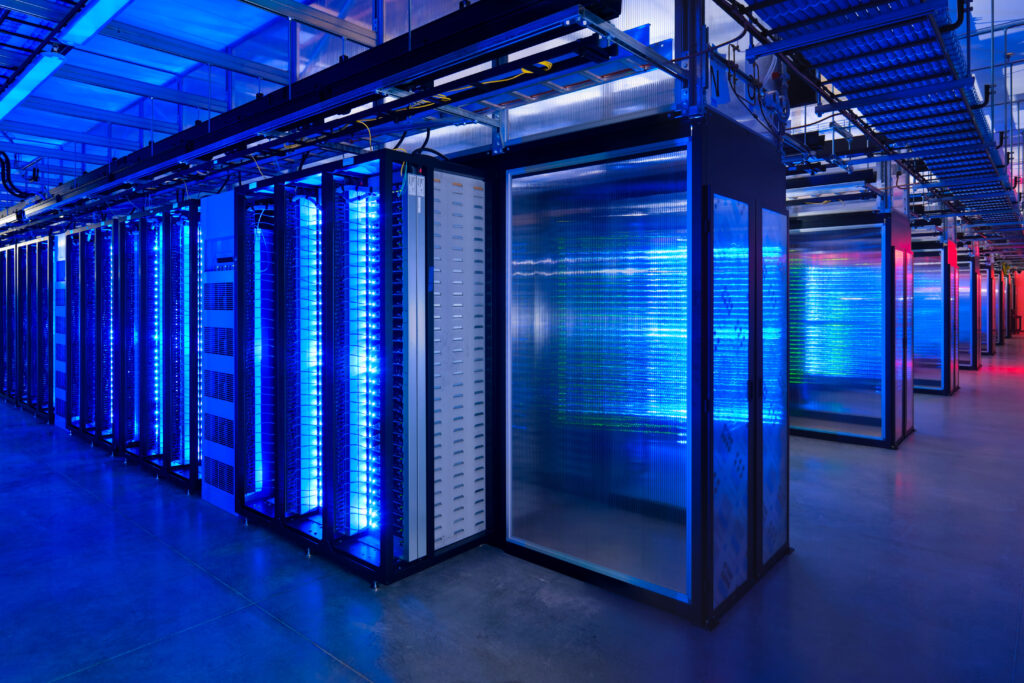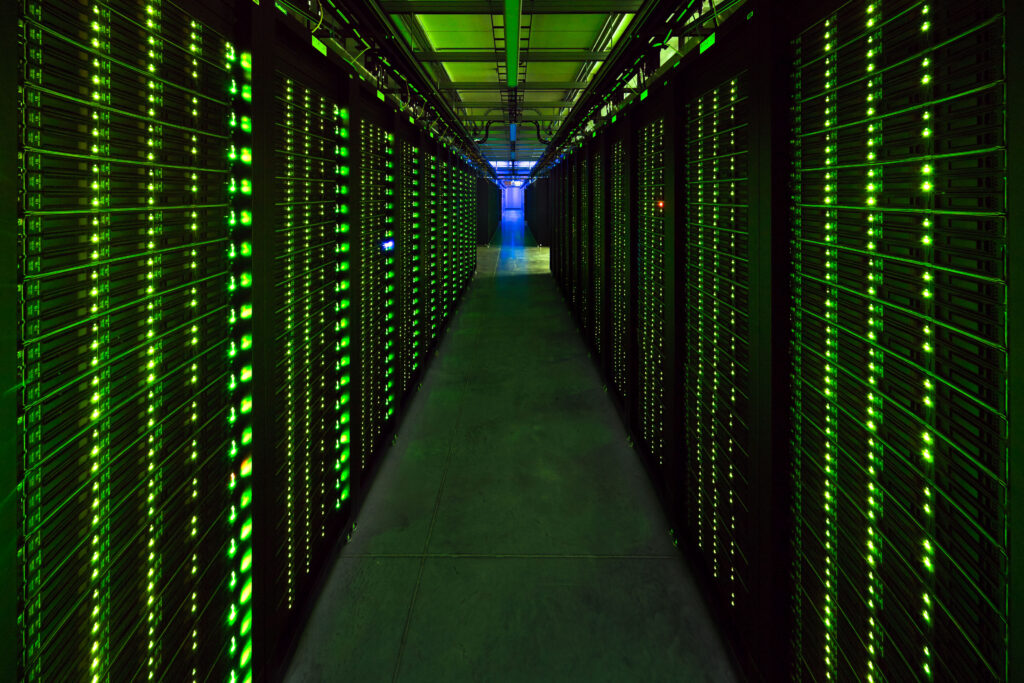
Surfing a Hurricane
How data centers weathered the pandemic’s colossal demand wave — and what other sectors can learn from that resiliency
Over the past nine months, our daily realities have shifted dramatically. Commutes to busy office buildings and schools have been replaced with work, school and personal lives centered around home — and an almost constant reliance on connectivity and content that allows us to attend meetings, stay in touch with family, get an education, entertain ourselves and even arrange for safe delivery of groceries and other basic necessities. It has been a drastic change, but one that, in some respects, feels surprisingly seamless.
We tend not to notice or appreciate things that simply act as expected; but it’s worth taking a moment to be amazed that the technological infrastructure we depend on has been there for us with few problems, even as it faced an unprecedented surge in global demand. Imagine if this pandemic happened ten years ago, when video conferencing was relatively young and cumbersome and internet speeds were much slower. There would be no working from home or learning from home; we’d be isolated with no income or education.
For all of our collective concern about systems of all sorts — health care, markets, political — one crucial system that has revealed itself to be well-positioned to take on the pandemic with little disruption, supporting us through online schooling or global vaccine research, through corporate meetings and remote Zoom surgeries, is tech. Why? I’m going to let you in on a little secret: the tech industry has not only been preparing for this pandemic for decades, they’ve built the tools and infrastructure to make the transition we went through seem easy.
When you look at the current business climate, the stock market’s biggest gainers are the companies that were prepared and are cornering the market on services that appeal to social distancers: Companies like Microsoft who had a 775% spike in cloud usage in March of 2020 and Amazon with a profit of $96 billion in Q2 for its cloud and retail services. These companies made it easier for businesses to operate remotely through their cloud applications and made home delivery of everything a business model long before Covid-19.
“Such blockbuster results can be largely attributed to the effect the Covid-19 pandemic has had on tech companies, boosting demand for their cloud products that have allowed workforces to connect while employees work from home. Before, digital transformation was a choice,” Alex Zukin, an analyst with RBC, told Forbes earlier this year. “Now for a lot of industries, it’s no longer a choice, it’s an imperative.”
But to cash in on demand, Big Tech first had to meet it. And a big part of their ability to do so lies with the design of the infrastructure that supports the movement of data around the world — namely, the data center system.
When you make a Zoom call to your mom, your computer at home communicates with a local data center (The Edge) within your community. That data center then communicates with a centralized data center (The Cloud) and in turn sends it to a local data center in your mother’s community. These data centers are typically nondescript, so you have probably seen one but didn’t pay much attention. Some of them are small; others are vast corporate campuses in remote areas. The closer these buildings are to your home, the faster the streaming of your video (this is called latency.) In order for everyone to have fast video conferencing for working and schooling at home, we need a lot of data centers, close to all of us, processing data instantly — and not failing when demand surges. From the early days of data centers, the tech industry realized that these buildings had to be designed to be mission critical, which means that they need to run 24/7 and be robust enough to withstand floods, fires, power outages, and even pandemics. At SNHA, where we have been tasked with designing one of the world’s largest data center networks for the past decade, we are constantly learning and exploring ways to build that physical infrastructure to support the non-stop flow of data as well as ever-changing technological and end-user demands. The pandemic provided a real-world test for this system — and the key factors that allowed data centers to meet the challenge may have future implications for businesses, schools and other facilities.

Right-sized redundancy means no downtime
Data centers’ 100% uptime requirement means that there can be no Achilles Heel or one single event that can take down a facility. To prevent this, much of the mechanical and electrical equipment is built with a duplicate in the event that one piece of equipment failed. This redundancy — whether it’s an extra piece of electrical equipment in the building or an entire duplicate building through which your Zoom call can be redirected — insulates data centers against mechanical failures.
As technology has advanced, the facilities have kept pace, reducing the need for one-for-one redundancy and introducing the newer concept of resiliency. Partly in response to concerns around climate change and natural disasters, SNHA and other architects have begun working within a framework of built-in resiliency measures, a more flexible and holistic approach designed to answer a range of factors. For instance, where once facilities were designed to withstand 100-year storms, today’s guidelines and codes call for buildings that can withstand a 500-year storm. In data centers, that preparedness level extends beyond the idea of physical damage from wind or floodwaters, into the business processes themselves and a range of solutions that can keep the data flowing, no matter the threat.
Flexibility and scalability ease transformation
Perhaps the most powerful tool data centers use to provide uninterrupted data flow and allow for constantly changing demand is built-in flexibility and scalability. At SNHA, we’ve learned to create malleable, modular environments that can facilitate growth in both technological capacity and numbers of employees. In the not-too-distant future, that flexibility will also help accommodate satellite-based internet, bringing high speed data even to rural areas.
These concepts will be readily applicable to workplaces of the near future, which can be designed and built to allow constant reconfiguration of space for multiple uses, an ever-shifting number of building occupants, or a rapidly changing need for social distancing. An exploration of continuously re-purposed communal spaces which are shared between companies — without ever needing to blend their workforces — is just one efficiency that is on the horizon.
Interestingly, the scalable quality of data center design is also instructive for school design. As populations ebb and flow between grade levels, resiliently designed schools could reapportion space to accommodate larger classes in one grade, while shrinking space for a grade with lower enrollment levels. To accommodate new kinds of instruction and programming, a scalable school facility could easily add modular blocks to create appropriate spaces without a major renovation cost in dollars or in time.
Smarter solutions create balanced use of resources
Data centers depend on an uninterrupted power and water supply, which is necessary to run and cool down the massive banks of servers. Thus, data center power is sized for “peak loading” — the capacity to run every machine at the same time. Creating that extra capacity allows data centers to easily keep up with any spike in demand, though it is estimated that in a typical year, the servers will run at only about 25% capacity, leading to some ongoing criticism around waste of power and unused infrastructure. If the buildings lose power, data centers must provide their own, in most cases through emergency generators.
Yet the intense appetite for power that these buildings exhibit has led tech companies into the arena of energy innovation. Data centers in areas with little natural water have had to learn to meet their cooling needs in innovative ways, leading to an exploration of better and more environmentally conscious solutions. At SNHA, we are continuously looking for ways to refine and enhance cooling, allowing the infrastructure to make a significant contribution to greater efficiency.
Big tech has also set out to meet a very high bar when it comes to environmental standards, with most major companies in the sector pledging carbon neutrality or even negativity by 2030. This has resulted in rigorous goals for data center energy use, with strategies that include a shift to renewable energy bolstered by collaboration with local utilities to increase production from clean energy sources. Tech companies have also invested heavily in energy storage technology, necessary for always-on data centers to make the switch to reliance on wind and solar power.
Ultimately, the change in data center energy use infrastructure will inform not only other mission-critical facilities and workplace facilities — they’ll have implications that trickle all the way down to the design of our homes.
A skilled, loyal workforce keeps things running
A big component of keeping these facilities running is having skilled staff that can be at the facility at a moment’s notice and be willing to camp out during disasters. SNHA designs facilities with locker rooms, showers, and sleeping areas — and our clients invest in creating workplaces that can keep employees happy.
These facilities not only help attract talented staff but create loyalty and a strong workplace culture. Data center campuses, which are often in remote locations far from other amenities, provide a human-centric place for employees to work in the middle of a technology-drenched environment. When crunch time hits, data centers have cultivated a positive workplace experience that helps their workforce do what it takes to keep the data flowing smoothly in the midst of challenging circumstances.
It’s worth noting that when data centers do experience a failure, the cause is most often human error. In an environment where down time isn’t acceptable, keeping workers happy, productive and sharp isn’t just good business practice, it’s a critical part of corporate and facility resiliency.
In order to support workforce satisfaction and competency, SNHA not only builds in amenities, we consider every aspect of the end-user experience and facilitate needs like parking, wayfinding and even training. In fact, before our data centers are built, we create a full virtual rendering designed to give employees a chance to walk through and train for working in a new environment, even before the walls are up.
Automation offers expanded options
Though data centers do require on-site workers to keep the servers running, remote monitoring and selective automation of processes allows even large data centers to operate with a skeleton crew, as they have been during the Covid crisis. Systems such as vast cooling and mechanical systems are made more efficient and manageable through automation that allows precise control from a computer screen that might be in a different facility, miles away.
But, while building in automation might create seamless control and help to eliminate human error, many aspects of data center construction and maintenance are not automation-friendly. Even in a tech-forward environment, data centers must carefully evaluate how to strategically deploy automation to enhance the workings of a facility, without undermining its efficiency or use or introducing vulnerabilities.
By focusing attention on these five areas, data centers have created a blueprint for infrastructure that can not only survive challenges, but thrive amidst them. The pandemic has been the proving ground, but the near future will demonstrate how other industries and facilities are able to put these lessons into practice to weather the crises that come.
